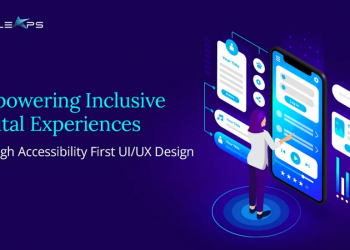Logo design plays a crucial role in shaping a brand’s identity and perception. A logo is often the first point of contact between a brand and its audience. A well-designed logo can create a positive first impression, capturing the attention and interest of potential customers. It communicates the brand’s personality, values, and essence. A carefully crafted logo can convey professionalism, creativity, trustworthiness, or any other desired brand attributes. Memorable logos are easily recognized and recalled by consumers. Think of iconic logos like the Nike swoosh or the Apple logo. They are simple yet distinctive, making them instantly recognizable and associated with their respective brands. In a crowded marketplace, a unique logo can help a brand stand out from competitors.
A distinctive logo helps consumers differentiate between brands and facilitates brand recall. A logo serves as a consistent visual element across various brand touchpoints, including packaging, advertising, websites, and social media. Consistency in logo usage helps reinforce brand recognition and strengthens brand equity over time. A well-designed logo can evoke emotions and create a connection with consumers. Whether it’s a sense of nostalgia, excitement, or trust, the right logo can resonate with the target audience on an emotional level. A good logo design is versatile and adaptable to different contexts and mediums. It should look equally impressive whether it’s displayed on a t-shirt, billboard, a business card, or a digital screen. Moreover, it instills confidence and credibility in a brand. Consumers are more likely to trust a brand that appears polished and well-established, starting with its logo. As a brand grows and evolves, its logo can evolve too. A flexible logo design can accommodate changes in the brand’s offerings, target audience, or market positioning while maintaining continuity with the brand’s heritage. Investing in a well-designed logo is an investment in the long-term success and recognition of a brand.
So what are the elements of good logo design? Here are some of the elements:
Creating a good logo involves several key elements that contribute to its effectiveness and impact. Here are some essential elements of good logo design:
1. Simplicity: A good logo should be simple and easy to understand at a glance. Avoid clutter and overly intricate designs that can confuse or overwhelm viewers.
2. Memorability: A successful logo is memorable and leaves a lasting impression on viewers. It should be distinctive enough to stand out from competitors and be easily recalled by consumers.
3. Relevance: A good logo should reflect the brand’s identity, values, and offerings. It should resonate with the target audience and communicate the essence of the brand effectively.
4. Versatility: A well-designed logo should be versatile and work across different mediums and applications, from print to digital to merchandise. It should maintain its clarity and impact whether scaled up or down in size.
5. Timelessness: While trends come and go, a good logo design should have a timeless quality that allows it to remain relevant and effective for years to come. Avoid overly trendy elements that may quickly become outdated.
6. Appropriateness: A good logo should be appropriate for the industry and audience it represents. It should strike the right balance between being innovative and respecting industry conventions.
7. Uniqueness: A successful logo is unique and sets the brand apart from competitors. It should avoid similarities with other existing logos to prevent confusion and ensure brand distinctiveness.
8. Consistency: Consistency in logo usage is crucial for building brand recognition and trust. A good logo should be consistently applied across all brand touchpoints, maintaining its integrity and visual identity.
9. Scalability: A good logo design should maintain its clarity and legibility when scaled to different sizes. It should be recognizable whether displayed on a billboard or a business card.
10. Adaptability: A flexible logo design allows for adaptation to different contexts and applications while maintaining brand recognition. It should be adaptable to various color schemes, backgrounds, and layouts.
By incorporating the above 10 elements into the design process, designers can create logos that effectively represent brands, resonate with audiences, and contribute to the overall success of the brand identity. However, designing a good logo is not an easy task. This is why using an AI logo generator can help speed up the process, create a number of creative variations to allow the designer to select the best one.









